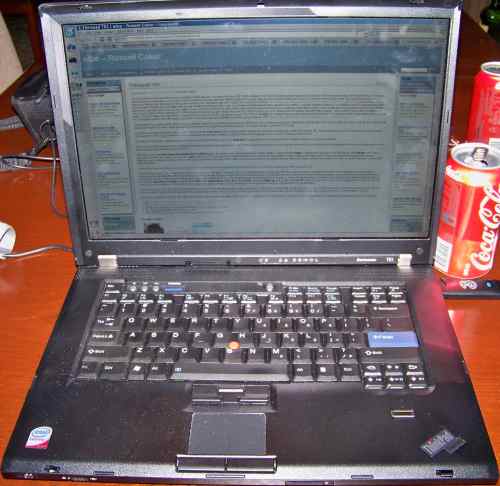I have been wondering for a while how to get X.org "input-hotplug"
to work, but I never actually tried before today.
It is actually fairly easy, once you know what to do.
Requirements
First, make sure you have the evdev X driver installed
(xserver-xorg-input-evdev).
You might want to use X packages from experimental since
things are much more recent than in Lenny or Sid these days,
and upstream improved input management in the meantime.
Then, if you are not running a pre-packaged kernel,
check the the evdev driver is enabled and loaded in your
kernel (CONFIG_INPUT_EVDEV).
Telling hal what to do with input devices
Now, you need to tell hal how to configure your input devices.
Actually, you do not have much to do since latest
xserver-xorg-input-evdev packages bring what you need.
hal reads all
fdi files under
/usr/share/hal/fdi/policy
to find out how devices should be configured.
If you run
lshal and look for
input, you should
see that the evdev is planned to drive your input devices.
However, if you look at keyboard devices in lshal (look for
input.keys),
you will see that the US layout is used.
To switch to another layout, you can add some overriding rules
as a new
*.fdi file in
/etc/hal/fdi/policy/.
For instance, to get French layout:
<?xml version="1.0" encoding="UTF-8"?>
<deviceinfo version="0.2">
<device>
<match key="info.capabilities" contains="input.keys">
<-- Enforce XkbLayout=fr and XkbVariant empty -->
<merge key="input.xkb.layout" type="string">fr</merge>
<merge key="input.xkb.variant" type="string" />
</match>
</device>
</deviceinfo>
Thanks to this, you can enforce XkbLayout, XkbVariant and friends
as usual in
/etc/X11/xorg.conf.
Don't forget to restart hal after modifying some fdi files.
Then run
lshal, and look for Xkb, you should find your setup there.
Note that you can add some matching rules to configure some
devices with different setups if needed.
Just need to read the output of
lshal and find something
like a hardware identifier to match on.
You can find some documentation about these rules by looking at the
existing fdi files in
/usr/share/hal/fdi/policy/20thirdparty/,
and in the upstream
x11-input.fdi (note that
input.xkb.foo is the actual recommended syntax instead of
input.x11_options.XkbFoo).
Touchpads
If you have a touchpad and want to use the synaptics driver,
installing the
xserver-xorg-input-synaptics will bring
another fdi file.
/usr/share/hal/fdi/policy/20thirdparty/11-x11-synaptics.fdi
matches
input.touchpad in the device capabilities in hal.
Now the synaptics driver will be automagically loaded for your touchpad
(instead of evdev for regular mice).
Again, you can override this rule in
/etc/hal/fdi/policy/
and you can add many configuration options for synaptics as well.
See
/usr/share/hal/fdi/policy/20thirdparty/11-x11-synaptics.fdi
to get an example.
Fortunately, you will not have to manually take care of the
above
/etc/hal/fdi/policy/ file for ever.
The plan is to have hal look at the Debian console configuration
and get at least the keyboard layout from there automatically.
Telling the Xserver to talk to hal
Now, you need to tell the Xserver to use what hal wants.
Basically, you want to remove everything about keyboard, mouse
and other input devices from your xorg.conf.
Just drop all
InputDevice sections and all references
to them within other sections.
With recent Xserver versions, options
AllowEmptyInput
and
AutoAddDevices are enabled by default
(otherwise, you might have to add them in the
ServerFlags
section).
For more documentation, you want to read
Peter Hutterer's blog,
especially
this post
and
this one.
By the way, if you don't want this input-hotplug thing and you
want to run a recent Xserver anyway, you should set
AllowEmptyInput
and
AutoAddDevices to off in the
ServerFlags section.
Update:
Fixed the way to manage fdi files, fixed the syntax of input.xkb.foo rules, added a paragraph about synaptics, and organized things in sections. Thanks to everybody's comment.

 Last week, I couldn't resist and bought myself an
Last week, I couldn't resist and bought myself an  I want to echo what Brice
I want to echo what Brice